Audiophile Marketing: Pick Three Letters
DXD CDs
I hadn’t planned on writing today. My efforts lately have been focused on the relaunch of iTrax.com. Everyday, I try to add a couple of albums from the AIX Records collection AND from the licensed catalog of other labels that produced bona fide high-resolution audio. Right now there are 45 albums available with more being added everyday. In fact, I recently added the only non-AIX title to the site. Some years ago Sony Classical licensed the surround version of the Zenph Re-Performance of Glenn Gould’s 1955 recording of the Bach Goldberg Variations. I’ll write an entire blog on this remarkable album and the amazing technology that allows it to live again soon.
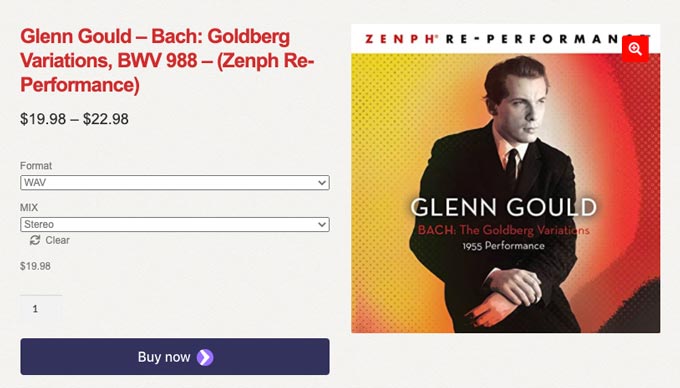
But today, I happened into not one or two but a bunch of questionable marketing pitches as I cruised through a few of audiophile websites or read newsletters from audiophile companies.
The catalyst was a pleasant email exchange I’ve been having with a reader — and speaker designer — based in the U.K. He mentioned an album that he purchased from Japan to demonstrate to a reviewer. He wrote:
“Stevie Harris was very impressed with DXD CD : ‘Tsuyoshi Yamamoto Trio – What a Wonderful Trio!’ Features: 99.99% Fine Silver disc • Digital eXtreme Definition CD • 24-bit 352.8 kHz Super High Definition format: Digital eXtreme Definition 24-bit 352.8 kHz CD! Playable on all CD players! Consisting of some beautiful standards such as Smoke Gets into Your Eyes, Star Dust, Sunflower, plus some terrific new pieces created by Yamamoto, the music and sonic excellence has definitely surpassed his last album. Recorded in Tokyo in July of 2008. In DXD digital format.”
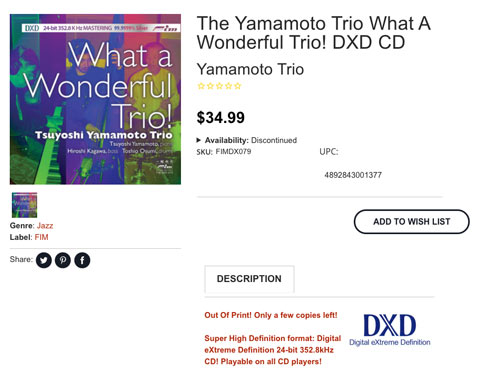
After reading his note, I did a quick online search and found the album at Elusive Disc (a highly regarded distributor of AIX Records discs as well as plenty of other high-end labels). Indeed, the title at the top of the page describes the disc as a “DXD CD.” Knowing that there is no such format as a “DXD CD,” I wrote back to the gentleman and attempted to clarify that the description was conflating with two unrelated audio formats. Further down the page, they double down on the notion that this is something more than a standard CD:
“Super High Definition format: Digital eXtreme Definition 24-bit 352.8kHz CD! Playable on all CD players!“
The disc retails for $34.99. It is a standard Redbook CD and delivers two-channels of 44.1 kHz/16-bit PCM audio on all CD players — just like all other Red Book CDs. This is NOT a “Super High Definition 24-bit 352.8 kHz CD,” as the copy states. I’m sure the recording sounds wonderful but I’m uncomfortable with the hyperbolic and false marketing claims. And making the disc out of 99.999% pure silver (or gold – see below) doesn’t make any difference either. Vendors can and should do better IMHO.
MQD 24k Gold Master Quality Disc Blanks
For those still playing CDs, burning your CD-Rs has always been a good way to create custom “playlists” of your favorite music. For some labels, selling their albums on CD-Rs is a clever way of managing inventory, creating hand labeled signed, limited edition copies, and providing discs on an “as needed” basis — it helps keeps costs and inventory down. I can relate. The second floor of my studio building is full of boxes of raw discs, packaging, and print for my albums. Replicated discs — CDs, DVDs, or Blu-rays — have minimum runs and are therefore more expensive than CD-Rs but are more reliable than the recordable variety (it has to do with the pits vs. burned holes in a dye layer). But when claims are made that gold CD-Rs offer “improved sound, extended life, and low error rates,” my hackles go up — especially if the vendor is charging 5x the normal retail price for them.
As described on a site offering burned CD-Rs branded as MQDs:
MQD (Master Quality Discs)
MQD were designed and tested to our rigorous specifications. We replicate each disc in our studios by hand, at optimized speeds from the master sequence. These are of master quality directly from the original sequence. MQD 24K Gold CDs are of archival quality and meant to last hundreds of years.

First, I would like to make clear the distinction between replicating and duplicating a disc. The description above is incorrect. Discs created in a CD/DVD/Blu-ray burner are duplicates! Replication takes place at a commercial facility using a stamper produced from a glass master. There is no way the company, “replicate(s) each disc in our studios by hand” unless you consider opening the door of the burner doing something by “hand.” Facts matter.
Remember that the Red Book specification establishes the physical and electrical specifications of a compact disc, which is simply a sophisticated, inexpensive, and portable storage medium for digital data. In the case of CD-Audio discs, the data is 2-channel PCM audio sampled at 44.1 kHz and 16-bits but other CD formats can store other types of data including text, images, or video. What the discs are made of doesn’t affect the data bits and as a results cannot have any effect on the reconstituted signals from that digital data no matter whether the data is audio, graphics, video, or text. So imagine my surprise when I read this description of gold “MQD” CD-Rs on the vendor’s website:
“When used for mastering music, we have noticed an increase of approximately ½ db in volume along with better frequency response and enhanced imaging when compared to our former mastering discs. We suggest you compare with your regular blank discs by recording the same music on to both and do a blind listening test. Many of you may not hear the difference, which is fine. But a few of you will.”
They noticed a volume increase? The audio output from a CD can be easily measured and a ½ dB would be very difficult to detect in any case. Do we really want any storage medium — especially optical discs — to mysteriously change the bits they’re storing with the result that they are louder or have enhanced imaging? I hope not. The amplitude, frequency response, and imaging will be identical between a standard, replicated, aluminum sputtered CD and a gold CD-R. Imagine, if a gold reflective layer changed any of the data bits in a text document file, perhaps the numbers or characters in a database or in a written article would be different. We call that type of change “corrupted data” and throw those discs away. But in the world of audiophile marketing, it’s a benefit? Curious.
E.S.E. – Extended Sound Environment
According to a MIX magazine article from 2013, the three letter, trademarked acronym E.S.E. is a surround production approach developed by Cookie Marenco of Blue Coast Records and her associate Jean-Claude Reynaud. The article states:
“The ESE technique uses a combination of mic placement in the tracking room that is an ITU configuration in front of the musicians, in addition to close mic positions for a more ‘direct’ sound from the instrument. We find the combination of close and room-miking more pleasing than using one and not the other, as well as providing an alternative to surround listening,” says Marenco. “Surround listening offers only one ‘optimum’ listening position: in the center of the five channels. Our technique is designed to have a three-dimensional approach to multichannel listening and offers the listener the ability to listen outside the speaker circle and walk ‘through’ the speakers and in the center.”
I admit that I like the approach described above and I enjoy Cookie’s recordings very much. Her approach and my own have similarities. I record an ensemble all at once — like she does — without overdubs (adding additional instrumental or vocal parts later). And I also use a combination of close and distant microphones. However, I do not use “fixed” arrangement of mikes in a 5.1 ITU configuration to record the “environment.” I capture individual instruments using multiple ORTF stereo pairs, which are panned during the mixing stage to create alternative discrete 5.1 mixes — i.e. a “stage” and “audience” POV. Recording from a fixed 5.1 mic array eliminates the option for alternative mixes. I also opt for real room reverberation instead of the digitally generated variety. Recording in a small “tracking room” studio mandates using artificial reverberation — although the article mentions using a “live chamber” for that particular album. The E.S.E. trademark attempts to “trademark” common recording processes. Does it really help in marketing recordings that are already quite good? It must because Cookie also has another marketing term she calls SEA or Systems for Exceptional Audio, which includes a description of the provenance of the album. I’m not sure I would agree that initially recording on an analog multitrack machine, mixing to Re Book standard, and finally “remastering” to DSD 256 is something to features but who knows. For example:
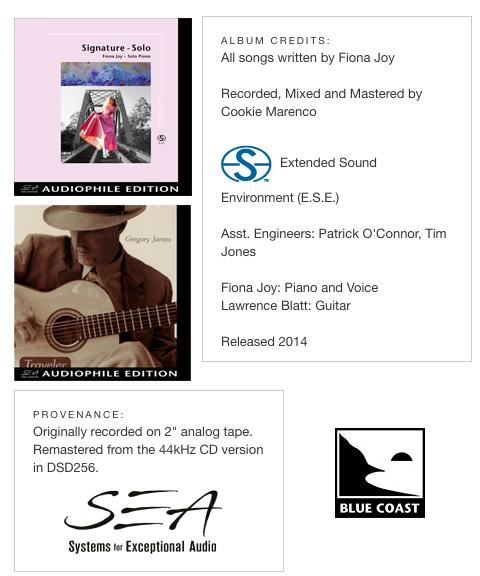
Reveal SDM™
SDM is another three letter acronym trademarked by 5/4 Productions, the audiophile recording company run by the very highly regarded engineer Michael Bishop in Ohio. It stands for Superior Dimension Music. Michael and his partners know a lot about recording and producing high-end audio. They’re responsible for hundreds of albums for Telarc and others and they’ve won numerous awards.
One of the partners, Robert Friedrich, reintroduced himself to me a few years ago at a trade show. He was a young musician in the student orchestra at CSU Northridge many years ago. I was their recording engineer at the time. Conductor and Director Dr. Tomas Osborn even commissioned me to compose a symphonic piece for them, which they premiered during one season. Robert remembered coming to my studio for a tour and being inspired by my work and all of the equipment. It must have had an impact because he makes his living as a recording engineer for classical and jazz releases.
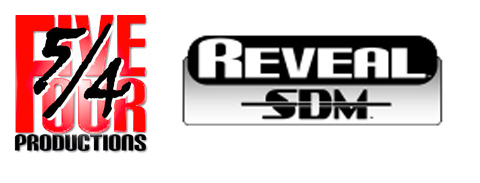
The Five/Four Productions website has a section dedicated to REVEAL SDM™. It is described in a few short paragraphs:
“Five/Four Productions’ exclusive REVEAL SDM™ technology and recording technique is employed from the first note of the recording session through every step leading to the final delivered master. Our decades of experience making High Resolution Audio recordings has led us to develop REVEAL SDM™ – an ideal combination of specific recording, mixing and mastering techniques, select microphones, custom electronics, and recording formats.“
“A Five/Four REVEAL SDM™ recording presents a superior rendition of musical nuance, dynamics, imaging, and front-to-back soundstage; i.e.: the very definition of Superior Dimension Music™. Your True Sound Revealed™.“
I find it curious that they never actually describe what REVEAL SDM™ is or does except to say it’s really good and everyone should want it. Five Four Productions engineers are VERY good at what they do with professional microphones, high-end preamps, and custom electronics — and they are very experienced. But their process is not unique and hardly seems worthy of branding.
ULTRADISC UHR GAIN HD with 4X DSD
One of the original and most successful audiophile labels, Mobile Fidelity makes a number of boasts on its website starting with the large image of a Studer reel-to-reel machine overlaid with the words, “THE UNDISPUTED LEADER IN AUDIOPHILE RECORDINGS SINCE 1977.” You can choose to believe it or not, but the fact remains that MoFi has contributed immensely to the audiophile hobby.

And they promote their engineering prowess with a variety of acronyms and trademarks. Take for example the ULTRADISC UHR GAIN HD line of discs — SACDs and CDs derived from analog transfers to DSD 256 and then downconverted back to PCM at 44.1 kHz/16-bits. A press announcement explains:
Mobile Fidelity Sound Lab (MFSL), has introduced its Ultradisc UHR GAIN HD with 4X DSD digital mastering technology which utilizes 4X DSD direct-to-CD conversion with a new mastering process to provide the highest accuracy, resolution and fidelity from CD.
GAIN stands for Greater Ambient Information Network which is used to provide subtle improvements in low-level detail, ambient cues and air, as well as a more relaxed presentation with more ease.
The GAIN HD mastering chain starts with Mobile Fidelity’s custom Studer tape playback deck with proprietary reproducer electronics and tape head designed by legendary engineer Tim de Paravicini. Music is extracted from the original master tapes and then directly fed to the MFSL’s 4X DSD A/D converter which samples at 11.2 MHz or 256fs, or 256 times the CD sampling rate of 44.1 kHz. The 4X DSD file is then downsampled to 1X DSD for the SACD layer and the 4X DSD file is also downsampled to 44.1 kHz for the CD layer. The result is better resolution in both formats.
The company’s first half-speed-mastered Original Master Recording LPs set a remarkable new sonic benchmark for vinyl playback and through the decades MFSL has continued to redefine the state-of-the-art in LP, CD and high-resolution digital sound with technologies including the Ultradisc 24-karat gold-plated CD, GAIN 2 mastering system, Ultradisc UHR (Ultra High Resolution) SACD disc and other breakthroughs.
The preceding paragraphs are yet more examples of an audiophile marketing department run amok with ridiculous techno jargon and questionable branding. UHR or Ultra High Resolution, what does that actually mean (and more importantly does it matter)? The specification for an SACD is DSD 64 and 1-bit. There is nothing “ultra high resolution” about an SACD. In fact, DSD 64 is barely higher spec than a standard CD with lots of ultrasonic noise. And 24-karat, gold-plated CDs still deliver just 44.1 kHz/16-bit audio.
However, my favorite paragraph is the one that claims that the GAIN system, “provide(s) subtle improvements in low-level detail, ambient cues and air, as well as a more relaxed presentation with more ease.” As audiophiles, we should all memorize this sentence and send up a flare every time a reviewer uses any of those three “very tired” audiophile descriptions. They mean nothing — but apparently they do help sell records.
And Finally MQA!
Master Quality Authenticated or MQA is another three letter acronym used to identify a process that is supposed to preserve the audio fidelity of the original master through to delivery as music streams or on MQA-encoded CDs. And it’s a complete hoax. In actuality, MQA is a lossy codec designed primarily to maximize revenues for MQA Ltd. and not fidelity. I interviewed inventor Robert Stuart for my Music and Audio: A User Guide to Better Sound, spoke with many other industry experts including Andreas Koch, John Siau, and Archimago and have concluded that MQA is a solution in search of a problem. It’s a non starter for myself and plenty of other engineers. Despite clear and convincing evidence that MQA is seriously flawed and actually reduces fidelity, reviewers, equipment manufacturers, and organizations continue to rave about the format. Why? Money.
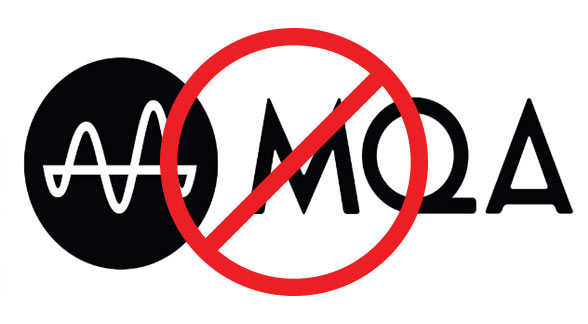
I was surprised to learn that some of my own albums have been subjected to the MQA process on the TIDAL platform. Some journalists have incorrectly assumed that I therefore endorse MQA. In fact, in making my albums available to Warner Brothers for streaming, WB granted permission to allow MQA to be used. Applying MQA to my masters reduces their fidelity.
MQA Ltd. seems to have unlimited amounts of money to spend on promoting their technology/process. I have learned that they are paying consultants and influencers hundreds of thousands of dollars to “lobby” on behalf of the process to hardware companies, broadcasters, artists, and journalists. And these lobbyists know nothing about audio.
As Linn Products — a vocal critic of the technology and company’s business model — wrote in their article MQA is Bad for Music. Here’s Why, the process is “…an attempt to control and extract revenue from every part of the supply chain, and not just over content that they hold the rights for.” There are severe disadvantages for both artists and audiophiles. Music lovers will “…pay a higher price for the same music, and you’ll pay more for your hi-fi system too. And even if you don’t buy into MQA, everyone will get less innovation, creativity and poorer music as a result.”
It’s unfortunate that money can steer an entire industry away from science and real innovation. My personal recommendation is to avoid MQA in any of its manifestations. For starter, I have reached out to my digital distributor and told them to request the removal of any AIX albums that have been compromised by MQA.
AIX Records – Music and Audio 50% OFF
There is one three letter acronym that I do support. AIX Records and AIX Media Group. I sometimes get asked whether AIX is an acronym for something. It really isn’t. The original incarnation was IX, which stood for “interactive anything” — X being a variable in this case. And I would actually pronounce the name of the company as those two letters, “I-X” even with the preceding letter “A.” I added the “A” to the front because I wanted to be at the head of the alphabet (I’ve spent my life at the bottom with Waldrep). No one could figure it out so I relented and just say the three letters now.
Father’s Day is this coming Sunday and I’m offering a 50% discount on physical copies of the Music and Audio book. Now is the perfect time to read what has been called, “the gold standard” in audio reference books. Use coupon code “Fathers50Percent” at check out.
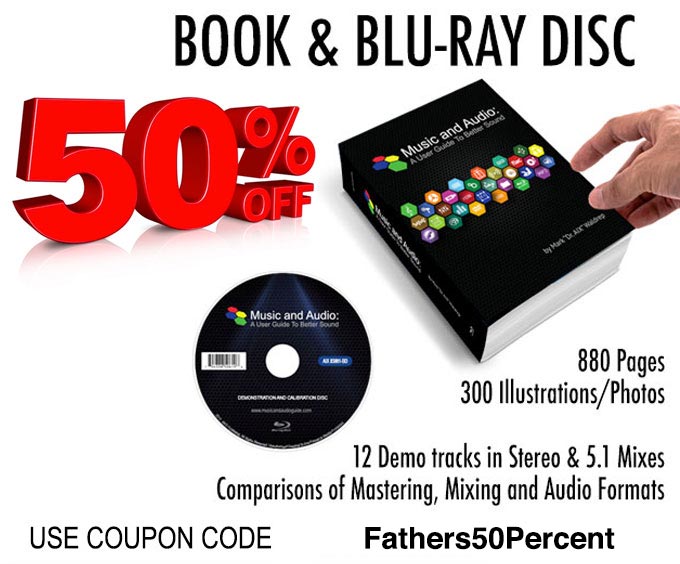
Streaming, Download, and Personal Audio – The New Book Is Coming
I’ve been spending a couple of hours everyday writing the new book — A Users Guide to Streaming, Downloads, and Personal Audio. Please visit the COMING SOON page and sign up for special discounts and early notification of the Kickstarter campaign. I expect to launch the campaign in the next few weeks.
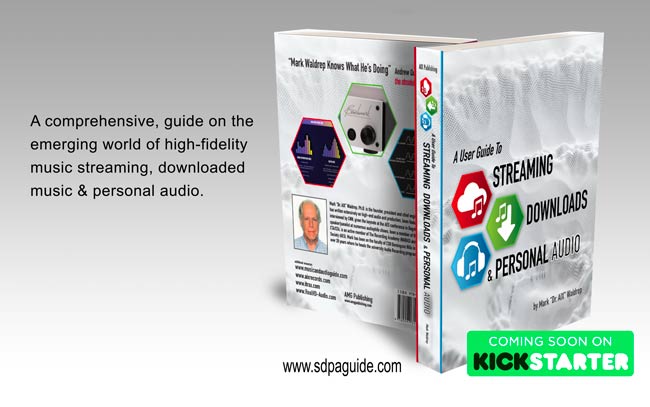
Thanks…
I welcome correspondence and I wanted to share an email that I received this past week from a customer that read my blog post about surround music AND who took the opportunity to listen to the 2017 AIX Records Sampler in full surround.
“About 90 minutes ago, I popped in your sampler Blu-ray and played the Dolby Digital 5.1 through my home stereo.
HOLY. SHIT. I get it now–it’s a completely new experience. You were right.
It’s like you’re literally in the recording room. It’s 3D music. You just shifted my perspective on how good recorded music can be. And most of that wasn’t even my style of music, yet it just sucked me in.
How many times have I spent hard $$$ chasing a small incremental improvement in my audio rig? Turns out, proper recordings make all the difference in the world.
So what does it take to get a band like Wilco to record with you? I would seriously pay $500 for that Blu-ray.
A New Fan
The iTrax sampler album is still available in stereo and surround for FREE. I think it’s been downloaded over 2000 times! If you’ve had a chance to listen, I would love to hear from you. Let me know if you prefer the stereo to surround versions. Cheers.

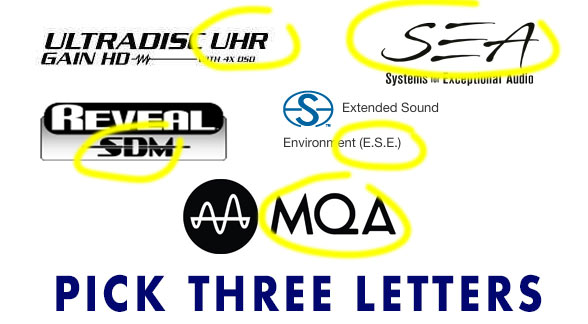
Great post, thank you for calling out the greedy bastards.
I’ve noticed many more labels recording in DXD on the nativedsd.com site as opposed to recording in DSD then mixing in DXD – its original purpose. The last couple of releases on the 2xHD label that transfers from old analogue tape recordings have also been in DXD (previously all DSD) I emailed to ask why the change and they said they have a new A/D convertor that just sounds better to them working this way. Sound Liaison who do really great recordings in DXD decided to run their last recording from the DXD capture onto analogue tape then back to DXD to add some lost “Mojo”
Why the hell we are still faffing around with optical discs that don’t add any benefit whatsoever is beyond me and to stuff a DXD recording onto a CD is plain bonkers!
It doesn’t get any clearer
Me encanta querido Mark, desmontando las mentiras de un montón de acrónimos. Lastima que no haya más gente enterada del negocio que se traen entre manos ciertas marcas. Saludos.
Hi Mark,
Great post and it’s important that individuals like yourself with background in audio production speak out about the marketing spin placed on all kinds of claims and products of dubious value.
It’s certainly understandable that companies and individuals want to distinguish themselves in a competitive field. However, this clearly needs to be done honestly with consideration for consumers. There appears to be no accountability – anyone can basically say anything these days!
*Truth matters.*
Wondering Mark, are the final results and analyses of the HD-Audio Challenge II almost done… Very much looking forward to the conclusions as I think with the numbers of listeners you collected, this would be highly relevant for the community; reflective of “real world” results.
https://www.audiophilereferencerecordings.com.au/steve-siu-somewhere-in-time.html
This is utterly ridiculous. What is the point in creating such a hi definition capture only to reduce it down to CD specification. The same with the MOFI SACD’s, the specification is DSD64 – why bother down modulating from DSD256. In both cases you would be better served at least being able to have the option of downloading the original mixed masters?
It is crazy to think that someone would spend $60 for this CD! Recording at better than the release format is a good thing to do … but the marketing spin is way over the top!
Cookie Marenco must be really good at what she does to produce such nice recordings despite all the bizarre self-imposed obstacles.
She is a very experienced audio producer and engineer. Her work is open, natural sounding, and reflects that audiophile aesthetic. I quibble with her support for DSD and for some of the nonsense that I see on her site…the MQD thing is pure BS…but I consider her a friend and colleague.